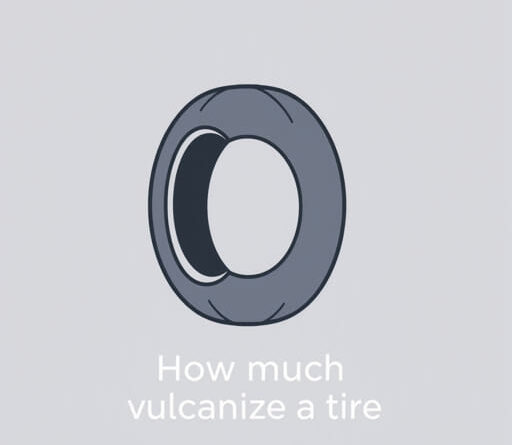How Much to Vulcanize a Tire
Vulcanizing a tire is a time-tested method used to repair and extend the life of tires, especially in heavy-duty vehicles or situations where a replacement tire is either unavailable or expensive. This process has been a staple in tire maintenance for decades and is still commonly used in specific regions and industries. Many drivers often wonder how much it costs to vulcanize a tire, and the answer can vary depending on multiple factors, including the size of the tire, the severity of the damage, and the type of service provider. This topic explores the different aspects of vulcanizing a tire and gives a clear picture of what you can expect to pay.
What Is Tire Vulcanization?
Understanding the Process
Vulcanization is a chemical process where rubber is heated with sulfur or other agents to improve its elasticity, durability, and strength. In tire repair, vulcanizing involves applying heat and pressure to a damaged area of the tire, bonding a rubber patch or filling compound to restore its structural integrity.
Why It’s Used
This method is particularly effective for repairing punctures, cuts, or holes that are too large for a standard plug or patch. It is most often used on commercial truck tires, off-road tires, and other large-format tires where the cost of replacement is significant.
Cost Breakdown: How Much to Vulcanize a Tire?
General Pricing Range
The average cost to vulcanize a tire can range from$10 to $100 or more, depending on several variables:
- Passenger car tires: $10$25 per repair
- Light truck/SUV tires: $20$40 per repair
- Commercial truck tires: $40$100 per repair
- Off-road or specialty tires: $75$150 or more
Factors That Influence Cost
The cost of vulcanizing a tire isn’t fixed. It depends on:
- Size and type of tire Larger tires cost more to repair.
- Extent of damage Deeper cuts or sidewall issues may require complex repairs.
- Service provider Specialized tire repair shops may charge more for quality service.
- Location Urban centers may have higher labor and service rates than rural areas.
Types of Vulcanizing Repairs
Cold Vulcanizing
This method uses chemical solutions and rubber patches, requiring no heat. It is a quicker, cheaper option but not suitable for high-stress areas or large damages.
Hot Vulcanizing
Hot vulcanizing involves applying heat and pressure using specialized machines to permanently bond the rubber. Though more expensive, it provides a stronger and longer-lasting repair.
When to Choose Which
Cold vulcanizing may cost around$10$30and is ideal for temporary fixes. Hot vulcanizing, which may cost between$30$100+, is preferred for commercial applications and long-term use.
Advantages of Vulcanizing a Tire
- Cost-effective: Especially when compared to buying a new tire.
- Environmentally friendly: Extends tire life and reduces waste.
- Safe and durable: Hot vulcanized tires can last almost as long as original ones.
- Useful for large or hard-to-replace tires: A practical solution for agricultural and industrial vehicles.
Disadvantages and Limitations
- Not suitable for all damages: Sidewall cuts or bead area damages may be irreparable.
- Time-consuming: Especially hot vulcanization, which can take several hours.
- Not ideal for all vehicles: Passenger vehicles may benefit more from modern patching or replacements.
Should You Vulcanize or Replace?
When to Vulcanize
Choose vulcanization when:
- The tire has a repairable puncture or cut within the tread area.
- The tire is expensive or hard to replace.
- The damage is not on the sidewall or bead.
When to Replace
Replacement is the better option if:
- There is damage to the sidewall or internal structure.
- The tire is too worn or old.
- Multiple areas of damage are present.
Where to Get a Tire Vulcanized
Professional Tire Repair Shops
Most professional tire repair services offer vulcanizing, especially those that cater to commercial fleets, agricultural equipment, or off-road vehicles. You can find them in industrial areas or through online listings.
Mobile Services
Some mobile tire repair companies provide vulcanizing on-site, especially for commercial trucks. These services can be slightly more expensive due to convenience and travel fees.
DIY Vulcanization Is It Possible?
While there are kits available for cold vulcanizing, hot vulcanization requires specialized equipment and safety precautions. It is generally not recommended to attempt hot vulcanizing at home unless you are trained and equipped.
How to Tell If Vulcanizing Is Needed
Not all punctures need vulcanization. Here’s how to decide:
- Measure the size of the puncture if it’s over ¼ inch, vulcanizing is often better than patching.
- Check if the damage is in the tread area sidewall damage usually disqualifies the tire.
- Inspect for internal damage bulges or exposed belts indicate a need for replacement.
The cost to vulcanize a tire can range from $10 to well over $100, depending on the method used, tire size, and damage extent. For passenger vehicles, it’s often a quick and affordable fix. For commercial, off-road, and specialty vehicles, vulcanization can offer significant savings compared to buying a new tire. Always consult with a professional technician to determine if your tire is a good candidate for vulcanizing. With proper service, vulcanized tires can be safe, reliable, and long-lasting, making them a smart choice for many drivers and fleets.
